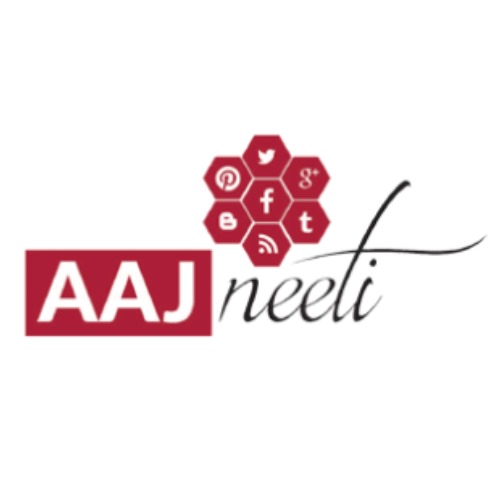The education sector is evolving rapidly. With increased digitization, global competition, and changing learner preferences, educational institutions—schools, universities, coaching centers, and online learning platforms—are under pressure to continuously fill classrooms and virtual seats. But how do they do that effectively?
The answer lies in lead generation for education.
Unlike traditional marketing, lead generation focuses on capturing interest and converting it into actual admissions. Whether your goal is to promote a new course, fill seats in a specialized program, or scale your edtech platform, you need a solid lead generation strategy to make it happen.
This article breaks down how to structure your efforts to generate high-quality leads that are more likely to convert into long-term students.
What Exactly is Lead Generation for Education?
In simple terms, lead generation for education is the process of attracting potential students (or their decision-makers) and encouraging them to express interest in your institution or programs. A lead may be someone who:
- Signs up for a newsletter
- Fills out a “Request Info” form
- Downloads a course brochure
- Attends a webinar
- Interacts via chatbot
Once you’ve captured their details, the next step is nurturing them with relevant communication to guide them toward admission.
Why Educational Institutions Must Invest in Lead Generation
Here are some compelling reasons why lead generation is no longer optional:
- Increased Competition: With hundreds of educational options available online and offline, institutions must be proactive to stand out.
- Digital-First Student Behavior: Students and parents now turn to search engines, reviews, and social media to explore education options.
- Measurable ROI: Digital lead generation provides data and metrics, enabling institutions to track ROI and improve strategies continuously.
In short, if you want to grow admissions consistently, you need to invest in structured lead generation.
1. Optimize Your Website for Lead Capture
Your website is the heart of your digital presence. But is it working hard enough for you?
Here’s how to turn your site into a lead magnet:
- Include simple, mobile-friendly inquiry forms
- Place CTAs like “Talk to Admissions” or “Download Curriculum” strategically
- Highlight key information like course fees, scholarships, placement stats, and faculty
- Use pop-ups or slide-ins to offer free resources (lead magnets)
Bonus tip: Ensure fast load speed and SEO-optimized pages so your site ranks well in search results.
2. Create Content That Educates & Converts
Modern students look for value before they make decisions. Offering useful, informative content can help you build credibility and trust.
Types of content that generate leads:
- Blog posts: “Top Careers After a Data Science Degree”
- Videos: Campus tours, alumni testimonials, student life highlights
- E-books: “Ultimate Guide to Studying Abroad”
- Infographics: Course comparisons or timelines
Use these as lead magnets—offer them in exchange for contact details.
3. Use Paid Ads to Attract the Right Audience
Paid advertising accelerates reach and allows precise targeting. Some effective ad platforms for education include:
- Google Search Ads: Target intent-based keywords like “best law college in Mumbai”
- Meta (Facebook/Instagram): Great for visual storytelling and targeting parents/students by interest or age
- YouTube Ads: Perfect for program overviews or success stories
- LinkedIn Ads: For professional courses and B2B education marketing
Always link your ads to focused landing pages with clear, simple forms.
4. Implement Lead Nurturing Campaigns
Capturing leads is just the beginning. Educational decisions often involve time and deliberation. That’s why nurturing is key.
Use email automation and remarketing to stay top-of-mind:
- Send welcome emails with useful links
- Follow up with course details or application reminders
- Share success stories and testimonials
- Segment based on interest (course, country, timing)
Platforms like Mailchimp, HubSpot, or ActiveCampaign make this process streamlined and effective.
5. Host Webinars and Virtual Open Days
In-person visits may not always be feasible, especially for out-of-city or international students. Hosting webinars, virtual Q&A sessions, or online open houses is a smart way to:
- Show off your programs
- Introduce faculty and alumni
- Answer live questions
- Collect contact information from attendees
Promote these events across social media and email lists to maximize attendance.
6. Collaborate with Influencers and Education Portals
Many students trust influencers, bloggers, and education portals while researching colleges or courses. Collaborating with them can drive highly qualified traffic to your lead forms.
Try:
- Sponsored content on popular YouTube channels
- Instagram reels featuring your campus or testimonials
- Listings on education portals like Shiksha, CollegeDunia, or StudyAbroad platforms
These collaborations improve credibility and visibility.
7. Leverage CRM and Analytics
A CRM (Customer Relationship Management) system helps you:
- Track where each lead comes from
- Manage follow-ups
- Automate emails and SMS
- Score leads based on interest level
Additionally, analytics tools like Google Analytics and Meta Pixel can show you which campaigns are driving real results. Use this data to refine your strategies.
8. Don’t Forget the Parent
For school and undergraduate courses, parents are often the primary decision-makers. Your marketing should address their concerns:
- Cost and scholarships
- Future opportunities
- Campus safety
- Curriculum quality
Create targeted campaigns and webinars for parents to help them feel confident in your institution.
Conclusion: Build a Future-Proof Education Lead Funnel
Lead generation for education is no longer just a tactic—it’s a necessity. By combining digital marketing, personalized communication, and smart automation, institutions can build a consistent pipeline of high-quality leads.
Whether you’re promoting a short-term certificate or a four-year degree, what matters most is this: understand your audience, offer value, and build trust.
Remember, every lead is a potential success story. Start generating them with intention today.

















